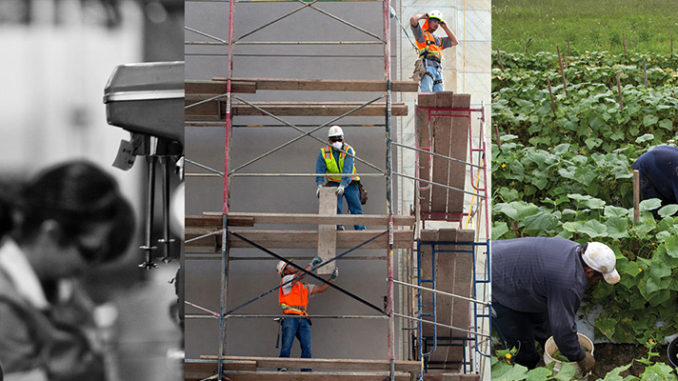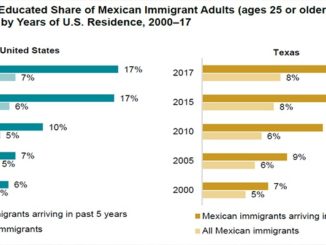
Aparna Mathur
Typically, “jobs-gaps” conversations have centered on the “skills gap” issue — a scenario in which employers are not able to fill open positions due to a lack of requisite skills among applicants. Less discussed, however, is the jobs gap at the opposite end of the skills distribution.
That is, the inability to fill job vacancies among low-skill workers. While there is no standard definition of low-skill work, generally low-skill jobs require zero to minimal work experience and a high school education or less. Much of the training happens on the job. These could include ‘skilled trades’ occupations such as carpenters, plumbers and electricians, but also occupations like agricultural farm workers, home health aides and food service jobs.
What is becoming increasingly clear is that across these sectors, labor shortages are high. Further, immigrant workers are much more likely to be employed in many of these positions than native-born workers.
This aspect of the labor market is important to keep in mind as we evaluate immigration policies. Policies that restrict immigration, particularly for low-skill workers, are likely to have equally negative long-term impacts on the economy as policies that restrict high-skill immigration.
BLS data details requirements for nearly all occupations. For instance, as classified by the BLS, jobs as “construction laborers” require no formal educational credential or work experience. The short-term training occurs on the job, and the median annual wage is $35,800.
For slightly higher-level positions salaries can range from $40,000 to $150,000. In April, job openings for construction workers were at a twenty year-peak of 404,000. However, employers report being unable to find workers to fill positions.
While 79 percent of construction firms plan to expand headcount in 2019, 78 percent of firms report having a hard time filling positions. Evidently, the labor shortage is large and an impediment to growth.
Trends show near tripling of job openings across multiple low-skill sectors since 2010. The BLS projects employment growth for home health aides and personal care workers to grow 41 percent from 2016 to 2026, relative to 7 percent average growth across all other occupations.
Current job openings are similarly high in manufacturing and accommodation and food service jobs, and the BLS expects occupations like these, as well as cooks, landscaping workers, janitors, to grow the most over the next decade. Not only are job opening levels increasing, but also hire rates across these industries have significantly increased since 2014.
So why are positions going unfilled? The problem appears to be that post-Great Recession, many native workers have simply not returned to the construction workforce. In addition, many younger workers are unwilling to opt for these positions, either because they dream of going to college and getting a better job, or because they simply have had no vocational training in high school to prep them for these positions.
Not surprisingly, non-native workers are increasingly filling the gap. As per the National Association of Home Builders, immigrants account for an average of 30 percent of the construction workforce, and among trades that require minimal prior education (carpenters, painters, drywall installers and brick masons) the share of foreign-born workers ranges from 48 percent to 54 percent.
A similar story is true among other occupations. Entry-level skill requirements are low for agricultural laborers, but on-the-job training allows workers to fill positions and work efficiently. Employers are heavily reliant on immigrant workers.
Recent data show a shift away from undocumented immigrant labor on American farms and towards legal workers coming in via the temporary agriculture visa program. More than one third of agriculture workers in 2014 were born outside the U.S. In personal care and health care support services, the share of immigrant workers is over 20 percent. A similar fraction (22 percent) of food preparation and service workers are immigrants.
And it is not that these immigrants are taking native-born workers’ jobs. Research indicates that there is no significant effect of immigration on net job growth of native-born Americans in the long run, and in fact, there is likely increased productivity due to immigration inflows.
Even when we look at the labor market beyond low-skill work, data show that immigration is a primary reason why the U.S. has managed to sustain increases in labor force participation, despite an aging workforce and declining fertility rates. Therefore, adopting programs, such as temporary worker programs or employer permits that allow employers to hire foreign workers either on a temporary or permanent basis, to fill these positions is critical.
While there is an obvious case for high-skilled immigration, it is time give low-skill immigration its due.
Aparna Mathur is a resident scholar in economic policy studies at the American Enterprise Institute, where she researches income inequality and mobility, tax policy, labor markets, and small businesses. She also directs the AEI-Brookings Project on Paid Family and Medical Leave, for which she was recognized in the 2017 Politico 50 list.



